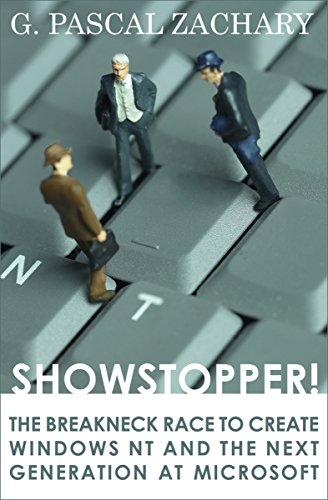Adf.ly
Adf.ly is the oldest and one of the most trusted URL Shortener Service for making money by shrinking your links. Adf.ly provides you an opportunity to earn up to $5 per 1000 views. However, the earnings depend upon the demographics of users who go on to click the shortened link by Adf.ly.
It offers a very comprehensive reporting system for tracking the performance of your each shortened URL. The minimum payout is kept low, and it is $5. It pays on 10th of every month. You can receive your earnings via PayPal, Payza, or AlertPay. Adf.ly also runs a referral program wherein you can earn a flat 20% commission for each referral for a lifetime.CPMlink
CPMlink is one of the most legit URL shortener sites.You can sign up for free.It works like other shortener sites.You just have to shorten your link and paste that link into the internet.When someone will click on your link.
You will get some amount of that click.It pays around $5 for every 1000 views.They offer 10% commission as the referral program.You can withdraw your amount when it reaches $5.The payment is then sent to your PayPal, Payza or Skrill account daily after requesting it.- The payout for 1000 views-$5
- Minimum payout-$5
- Referral commission-10%
- Payment methods-Paypal, Payza, and Skrill
- Payment time-daily
Shrinkearn.com
Shrinkearn.com is one of the best and most trusted sites from our 30 highest paying URL shortener list.It is also one of the old URL shortener sites.You just have to sign up in the shrinkearn.com website. Then you can shorten your URL and can put that URL to your website, blog or any other social networking sites.
Whenever any visitor will click your shortener URL link you will get some amount for that click.The payout rates from Shrinkearn.com is very high.You can earn $20 for 1000 views.Visitor has to stay only for 5 seconds on the publisher site and then can click on skip button to go to the requesting site.- The payout for 1000 views- up to $20
- Minimum payout-$1
- Referral commission-25%
- Payment methods-PayPal
- Payment date-10th day of every month
Short.am
Short.am provides a big opportunity for earning money by shortening links. It is a rapidly growing URL Shortening Service. You simply need to sign up and start shrinking links. You can share the shortened links across the web, on your webpage, Twitter, Facebook, and more. Short.am provides detailed statistics and easy-to-use API.
It even provides add-ons and plugins so that you can monetize your WordPress site. The minimum payout is $5 before you will be paid. It pays users via PayPal or Payoneer. It has the best market payout rates, offering unparalleled revenue. Short.am also run a referral program wherein you can earn 20% extra commission for life.Wi.cr
Wi.cr is also one of the 30 highest paying URL sites.You can earn through shortening links.When someone will click on your link.You will be paid.They offer $7 for 1000 views.Minimum payout is $5.
You can earn through its referral program.When someone will open the account through your link you will get 10% commission.Payment option is PayPal.- Payout for 1000 views-$7
- Minimum payout-$5
- Referral commission-10%
- Payout method-Paypal
- Payout time-daily
Bc.vc
Bc.vc is another great URL Shortener Site. It provides you an opportunity to earn $4 to $10 per 1000 visits on your Shortened URL. The minimum withdrawal is $10, and the payment method used PayPal or Payoneer.
Payments are made automatically on every seven days for earnings higher than $10.00. It also runs a referral system wherein the rate of referral earning is 10%.- The payout for 1000 views-$10
- Minimum payout -$10
- Referral commission-10%
- Payment method -Paypal
- Payment time-daily
Oke.io
Oke.io provides you an opportunity to earn money online by shortening URLs. Oke.io is a very friendly URL Shortener Service as it enables you to earn money by shortening and sharing URLs easily.
Oke.io can pay you anywhere from $5 to $10 for your US, UK, and Canada visitors, whereas for the rest of the world the CPM will not be less than $2. You can sign up by using your email. The minimum payout is $5, and the payment is made via PayPal.- The payout for 1000 views-$7
- Minimum payout-$5
- Referral commission-20%
- Payout options-PayPal, Payza, Bitcoin and Skrill
- Payment time-daily
Cut-win
Cut-win is a new URL shortener website.It is paying at the time and you can trust it.You just have to sign up for an account and then you can shorten your URL and put that URL anywhere.You can paste it into your site, blog or even social media networking sites.It pays high CPM rate.
You can earn $10 for 1000 views.You can earn 22% commission through the referral system.The most important thing is that you can withdraw your amount when it reaches $1.- The payout for 1000 views-$10
- Minimum payout-$1
- Referral commission-22%
- Payment methods-PayPal, Payza, Bitcoin, Skrill, Western Union and Moneygram etc.
- Payment time-daily
Linkrex.net
Linkrex.net is one of the new URL shortener sites.You can trust it.It is paying and is a legit site.It offers high CPM rate.You can earn money by sing up to linkrex and shorten your URL link and paste it anywhere.You can paste it in your website or blog.You can paste it into social media networking sites like facebook, twitter or google plus etc.
You will be paid whenever anyone will click on that shorten a link.You can earn more than $15 for 1000 views.You can withdraw your amount when it reaches $5.Another way of earning from this site is to refer other people.You can earn 25% as a referral commission.- The payout for 1000 views-$14
- Minimum payout-$5
- Referral commission-25%
- Payment Options-Paypal,Bitcoin,Skrill and Paytm,etc
- Payment time-daily
Linkbucks
Linkbucks is another best and one of the most popular sites for shortening URLs and earning money. It boasts of high Google Page Rank as well as very high Alexa rankings. Linkbucks is paying $0.5 to $7 per 1000 views, and it depends on country to country.
The minimum payout is $10, and payment method is PayPal. It also provides the opportunity of referral earnings wherein you can earn 20% commission for a lifetime. Linkbucks runs advertising programs as well.- The payout for 1000 views-$3-9
- Minimum payout-$10
- Referral commission-20%
- Payment options-PayPal,Payza,and Payoneer
- Payment-on the daily basis
Clk.sh
Clk.sh is a newly launched trusted link shortener network, it is a sister site of shrinkearn.com. I like ClkSh because it accepts multiple views from same visitors. If any one searching for Top and best url shortener service then i recommend this url shortener to our users. Clk.sh accepts advertisers and publishers from all over the world. It offers an opportunity to all its publishers to earn money and advertisers will get their targeted audience for cheapest rate. While writing ClkSh was offering up to $8 per 1000 visits and its minimum cpm rate is $1.4. Like Shrinkearn, Shorte.st url shorteners Clk.sh also offers some best features to all its users, including Good customer support, multiple views counting, decent cpm rates, good referral rate, multiple tools, quick payments etc. ClkSh offers 30% referral commission to its publishers. It uses 6 payment methods to all its users.- Payout for 1000 Views: Upto $8
- Minimum Withdrawal: $5
- Referral Commission: 30%
- Payment Methods: PayPal, Payza, Skrill etc.
- Payment Time: Daily
Ouo.io
Ouo.io is one of the fastest growing URL Shortener Service. Its pretty domain name is helpful in generating more clicks than other URL Shortener Services, and so you get a good opportunity for earning more money out of your shortened link. Ouo.io comes with several advanced features as well as customization options.
With Ouo.io you can earn up to $8 per 1000 views. It also counts multiple views from same IP or person. With Ouo.io is becomes easy to earn money using its URL Shortener Service. The minimum payout is $5. Your earnings are automatically credited to your PayPal or Payoneer account on 1st or 15th of the month.- Payout for every 1000 views-$5
- Minimum payout-$5
- Referral commission-20%
- Payout time-1st and 15th date of the month
- Payout options-PayPal and Payza
BIT-URL
It is a new URL shortener website.Its CPM rate is good.You can sign up for free and shorten your URL and that shortener URL can be paste on your websites, blogs or social media networking sites.bit-url.com pays $8.10 for 1000 views.
You can withdraw your amount when it reaches $3.bit-url.com offers 20% commission for your referral link.Payment methods are PayPal, Payza, Payeer, and Flexy etc.- The payout for 1000 views-$8.10
- Minimum payout-$3
- Referral commission-20%
- Payment methods- Paypal, Payza, and Payeer
- Payment time-daily
LINK.TL
LINK.TL is one of the best and highest URL shortener website.It pays up to $16 for every 1000 views.You just have to sign up for free.You can earn by shortening your long URL into short and you can paste that URL into your website, blogs or social media networking sites, like facebook, twitter, and google plus etc.
One of the best thing about this site is its referral system.They offer 10% referral commission.You can withdraw your amount when it reaches $5.- Payout for 1000 views-$16
- Minimum payout-$5
- Referral commission-10%
- Payout methods-Paypal, Payza, and Skrill
- Payment time-daily basis
Short.pe
Short.pe is one of the most trusted sites from our top 30 highest paying URL shorteners.It pays on time.intrusting thing is that same visitor can click on your shorten link multiple times.You can earn by sign up and shorten your long URL.You just have to paste that URL to somewhere.
You can paste it into your website, blog, or social media networking sites.They offer $5 for every 1000 views.You can also earn 20% referral commission from this site.Their minimum payout amount is only $1.You can withdraw from Paypal, Payza, and Payoneer.- The payout for 1000 views-$5
- Minimum payout-$1
- Referral commission-20% for lifetime
- Payment methods-Paypal, Payza, and Payoneer
- Payment time-on daily basis
Just Cause 2 free download video game for Windows PC. Download free full version "Just Cause 2" from Shivaay gaming point .The game setup is tested and 100% fully working PC Game for free Download.
Just Cause 2 (PC) System Requirements
| Minimum System Requirements | |
|---|---|
| Operating System | Windows XP/Vista/7/ 8/10 |
| Processor | Pentium® II @ 450 MHz processor |
| RAM / Video Memory | 128 MB / 32 MB |
| Hard Drive | 2 GB |
| Video Card | Directx 8.0 with Compatible Graphic Card |


















































 Digg/username
Digg/username Flickr/username
Flickr/username Myspace/username
Myspace/username Facebook/Your Name
Facebook/Your Name Friendster/Your Name
Friendster/Your Name Virb/username
Virb/username Linkedin/Public Profile Name
Linkedin/Public Profile Name Twitter/username
Twitter/username YouTube/username
YouTube/username Last.fm/username
Last.fm/username Del.icio.us/username
Del.icio.us/username Wikipedia/username
Wikipedia/username Wishlist/Your Name
Wishlist/Your Name GMail/Your Name
GMail/Your Name coComment/username
coComment/username iJigg/username
iJigg/username PureVolume/username
PureVolume/username Upcoming/Your Name
Upcoming/Your Name Kongregate/username
Kongregate/username Zaadz/username
Zaadz/username Technorati/username
Technorati/username MyBlogLog/username
MyBlogLog/username Blog/Your Name
Blog/Your Name



















 Subscribe by email. Enter your email address below:
Subscribe by email. Enter your email address below: 















